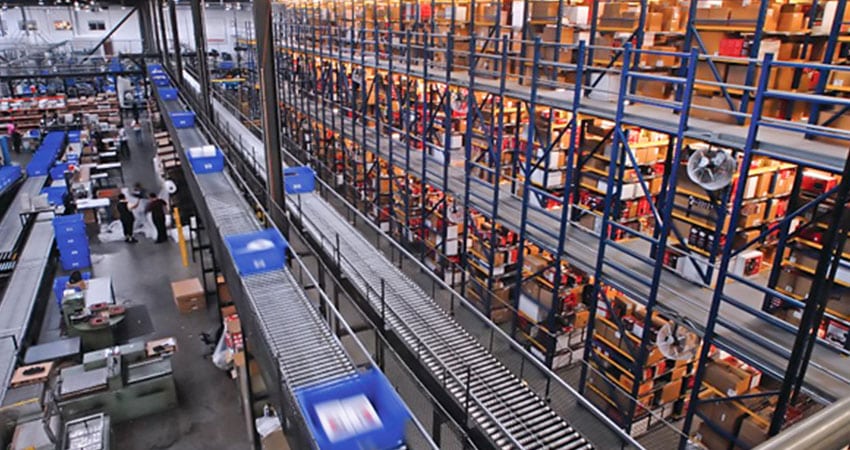The Future of Order Fulfillment Centers in a Online World
In the current rapidly changing digital environment, the concept of distribution centers has established itself as a foundation of efficient logistics and client happiness. As more companies move toward e-commerce, comprehending the nature of a fulfillment center represents and how it operates is essential for both the sellers and customers alike. A fulfillment center is a specialized warehouse where products are stored, prepared, and shipped to customers, bridging the gap between online purchases and timely delivery.
As a result of the increase of internet shopping, fulfillment centers serve a crucial role in the supply chain, helping brands handle inventory, smooth out shipping processes, and in the end enhance the shopping experience. As technology keeps to transform the way we purchase and get goods, the prospects of fulfillment centers promises to be progressively innovative, powered by automation and data-centric solutions that meet the requirements of an ever-growing digital marketplace.
Evolving Role of Distribution Centers

The role of distribution centers has greatly evolved in the past time, reflecting the evolving landscape of online shopping and consumer expectations. At first, these facilities mainly concentrated on storing inventory and dispatching products to customers. However, with the growth of online shopping, they have transformed into essential players in ensuring speedy and precise order fulfillment. Today, a fulfillment center is not just a warehouse; it is a high-tech operation that incorporates cutting-edge technology to streamline logistics and enhance client satisfaction.
As customer demands have changed towards faster shipping and more personalized services, fulfillment centers have evolved by adopting state-of-the-art automation and data analytics. These technologies enable facilities to optimize stock management, reduce processing times, and minimize errors in order processing. Furthermore, fulfillment centers are increasingly tasked with providing additional services such as kitting, bundling, and even returns processing, which additionally boosts their importance in the logistical chain ecosystem.
As we look at the future, the fulfillment center is set to play an even more key role as businesses seek to satisfy the increasing expectations of consumers. With the continued development of AI and robotics, fulfillment centers will likely turn into more effective and adaptable to shifting consumer needs. They will function as central hubs that support not only traditional online retail but also new business models, guaranteeing that companies maintain a competitive edge in an ever more online world.
Technology Integration in Fulfillment
The technology in fulfillment centers has transformed the entire logistical landscape. Automation plays a pivotal role, allowing for improved efficiency and accuracy in purchase processing. Robotic storage and retrieval systems simplify inventory management, allowing for quicker picking and packing of goods. This level of automation not only lowers labor costs but also reduces human error, which is vital in maintaining customer satisfaction through timely and accurate deliveries.
Additionally, the incorporation of innovative software solutions enables real-time tracking and inventory management. These systems provide fulfillment centers with data analytics that help in forecasting demand and optimizing stock levels. By using AI, operators can customize customer experiences based on shopping habits, confirming that fulfillment strategies align closely with market trends. This level of insight is invaluable for staying competitive in a rapidly evolving digital marketplace.
Moreover, the rise of e-commerce has prompted fulfillment centers to adopt cutting-edge technologies such as robotics and drone deliveries. Robots can quickly navigate through warehouses, speeding up order fulfillment, while drones are under consideration for last-mile deliveries that shorten transit times. As consumer expectations continue to rise, embracing these technological innovations will be crucial for fulfillment centers to meet demand and maintain operational excellence in the future.
Obstacles and Opportunities Ahead
The landscape of logistics centers is evolving swiftly, presenting a combination of challenges and possibilities for businesses. fulfilment centre of the primary challenges is the increasing demand for faster delivery times. As e-commerce continues to develop, customers expect their orders to show up almost instantly. Fulfillment centers must adapt to this expectation by refining their operations and dedicating resources in innovations that enables more efficient processing and shipping. Failing to fulfill these demands can result in lost customers and diminished brand loyalty.
On the opportunity front, progress in automated processes and AI are transforming the productivity of fulfillment centers. By implementing innovative technologies, such as robotics and digital inventory management systems, fulfillment centers can boost productivity and lower operational costs. These innovations not only enhance the efficiency of order processing but also allow for greater inventory accuracy, which is crucial in a challenging market. Welcoming these changes can position fulfillment centers as key players in the next phase of logistics.
Moreover, sustainability is becoming an progressively crucial factor for consumers. Fulfillment centers have the potential to adopt green practices, such as enhancing packaging and using renewable energy. By committing to sustainability, fulfillment centers can appeal to a growing group of environmentally-conscious consumers while also minimizing their carbon footprint. This shift not only supports the planet but also cultivates a positive brand image and can lead to greater customer loyalty.